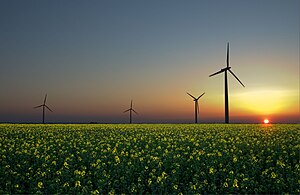 Image via Wikipedia
Image via Wikipedia
Like any developing country, the Philippines is facing a formidable challenge of fostering sustainable energy options to support the energy requirements of its economic and social development goals with minimal adverse effects on the environment. In the Philippines, renewable energy sources contribute 43 percent to the country’s primary energy mix, one of the highest in Southeast Asia. The Philippines has an existing capacity of 5,500 MW of renewable energy power. Out of which, 61 percent is hydropower while 37 percent is geothermal power. Biomass energy application accounts for around 15 percent of the primary energy use in the country. The resources available in the Philippines can generate biomass projects with a potential capacity of around 200 MW.
The country has abundant supplies of biomass resources, offering much potential for clean energy generation. These include agricultural crop residues, forest residues, animal wastes, agro-industrial wastes, municipal solid wastes and aquatic biomass. The most common agricultural wastes are rice hull, bagasse, coconut shell/husk and coconut coir. The use of crop residues as biofuels is increasing in the Philippines as fossil fuel prices continue to rise. Rice hull is perhaps the most important, underdeveloped biomass resource that could be fully utilized in a sustainable manner.
The Philippines is mainly an agricultural country with a land area of 30 million hectares, 47 percent of which is agricultural. The total area devoted to agricultural crops is 13 million hectares distributed among food grains, food crops and non-food crops. Among the crops grown, rice, coconut and sugarcane are major contributors to biomass energy resources. The most common agricultural residues are rice husk, rice straw, coconut husk, coconut shell and bagasse. The country has good potential for biomass power plants as one-third of the country’s agricultural land produces rice, and consequently large volumes of rice straw and hulls are generated.
